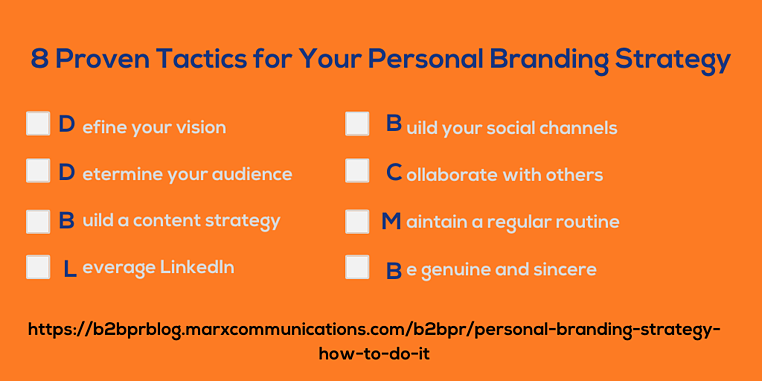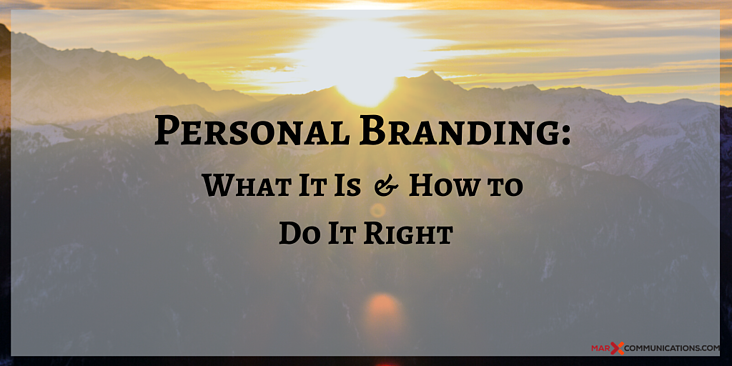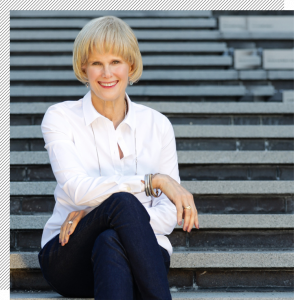Personal Branding: What It Is and How to Do It Right
Personal branding puts you in front of your brand instead of behind it. It’s not about dressing you up and giving you a script. It is about taking you — the person you really are — and showing your audience what you’re all about.
A personal branding strategy is a relatively new concept. Traditionally, CEOs and other executives were well-hidden behind their company brands, and there they stayed. Few people knew the names and stories of a brand’s executives — until recently.
Nowadays, there’s no argument this has shifted. With a growing distrust of companies, audiences have called for CEOs and other executives to enter the limelight, engage on social media, and produce content. This often means that founders and CEOs who are comfortable engaging with their audience have an edge that others don’t.
So let’s dive into the fundamental but necessary question: What’s personal branding — and why do you need a personal brand?
Personal Branding Definition
A personal brand takes a person — in B2B, often the CEO and other executives — and markets them as if they were a brand. Don’t think, however, that you need to be a CEO to have a personal brand. Anyone has a personal brand. As Jeff Bezos famously said, “Your personal brand is what people say about you when you’re not in the room.” Sometimes referred to as “self-packaging,” a personal brand is how you’re perceived by others. It’s a shortcut to someone understanding what you’re about.
Personal brands are an effective way of drawing people to your company. Think about such personal branding examples as Jeff Bezos or Bill Gates. Or, in the B2B sphere, think about Neil Patel or Seth Godin. All of these names have immediate name recognition. But it’s not just that you know the name — you have feelings associated with each person. From intelligence to generosity, these individuals have a reputation associated with their name — and that reputation affects their business as well. That is the power of creating a personal brand.
A caveat. A personal brand is not spin or inauthenticity. That only backfires. Think of it as putting your best foot forward and developing a meaningful reputation.
What is it about a personal brand that makes it so powerful? What can it do for you and your business? Let’s examine that.
Why You Need to Invest in a Personal Brand
A personal brand goes way beyond simple name recognition. When done right, it has the power to transform your business, even bringing in more leads. Here are a few of the specific ways that a personal brands boosts your business:
Competitive Advantage
Many industries are flooded with companies, all offering relatively the same products and services. A personal brand is a great way to stand out from the pack. This plays into the power of word of mouth marketing. Studies have shown that people place a higher premium of recommendations and word of mouth than simple advertisements. That’s why brands with reputable CEOs may use them as figureheads and spokespeople for the brand, an effective way to secure brand recognition.
Social Engagement
While you may already post to your company’s social media accounts, a personal brand often provides better results. Audiences prefer to engage with real people as opposed to brands. As you share content on social media that underscores your personal brand, you may find that it boosts your company’s social media strategy as well.
Brand Value
Your personal brand isn’t just about your reputation. It also has a surprising effect on your company’s brand. In one poll, global executives said they attributed 44% of their company’s market value to their CEO’s reputation. Another 87% said it attracted investors to their business. This data shows a clear correlation between a business’s success and the reputation of its CEO.
Risk Mitigation
The reputation of a CEO has an impact — both positive and negative — on a brand’s reputation. If a CEO trashes his reputation, it can damage even the most successful company. On the other hand, if a CEO maintains a solid reputation and is liked by his audience, this will instill loyalty that can withstand a company crisis — improving the chances that the company will recover from a setback.
Now that we see why a personal brand is so valuable, let’s examine how you can establish and build your own flourishing personal brand.
8 Essential Steps to a Knockout Personal Branding Strategy
1. Define Your Vision
A personal brand without a vision is like being in the middle of the wilderness without a compass or map. You need to understand the big picture, where you want to go and how you want to get there.
Determine how you want others to perceive you. To that end, ask yourself such questions as…
- Who am I?
- What are my values?
- What do I want to promote?
- What passions drive me?
This goes beyond what industry you’re in or the kind of business you run. People want to know what makes you different from other business leaders — so it’s time to nail down a vision that will guide your personal brand along the way.
Pro Tip: If you’re a little lost on where to start, think about what others say when they introduce you — especially those who know your work well. This can give you key insight into how others perceive you and what your visible strengths are. It will also show you if you’re misperceived. If you see yourself as an innovator for example, but people never introduce you as one, think about what you need to do to tweak your personal brand so your innovative streak stands out.
2. Determine Your Audience
Your personal brand is not just about you. It’s about creating real and lasting connections with people. But it’s impossible to appeal to everyone. You need to narrow it down and define who you want to attract to your personal brand.
To get a good idea of who your target audience is, tap into your brand’s website and social media analytics. In the process, ask yourself these questions:
- How old are they?
- Where are they from?
- What professions do they hold?
- What are their goals?
- What problems do they face?
The answers to these questions will tell you who you’re attracting and how you can help. It will guide you to boil down your messaging to have the most curb appeal.
3. Build a Content Strategy
Content is king, especially when it comes to establishing a personal brand. Creating and sharing content is key for people to get to know you, your personality and your expertise.
The best way to begin your strategy is with a little research. If you’re going to create content that your audience wants to read, then you need to know them. Use Google Analytics to see who is visiting your site and a tool like BuzzSumo to see what is working for other companies within your industry.
Once you have a good idea of who comprises your audience and what type of content they consume, it’s time for the hard work of content creation. A well-rounded strategy includes content formats such as blog posts, ebooks, infographics and video. Make your content come alive with visual graphics — a free tool like Canva can help you to create these with ease.
A good content strategy also includes sharing your content on social media. Whether it’s Facebook, Instagram, Twitter or LinkedIn, make your content accessible to your audience. You may even use paid promotion to give your top content an extra lift.
4. Leverage LinkedIn
LinkedIn might not have the initial glam factor of Facebook or Twitter, but it has proven its unequivocal value over the years. It’s lasted as a dynamic network with incredible power for branding strategies.
Consider that there are over 30 million companies who have a LinkedIn profile and 91% of business executives rate LinkedIn as their first choice for professionally relevant content. There is no question about it: If you are building a personal brand, especially in B2B, you need to be active on LinkedIn.
What should you do to make the most of LinkedIn? Post articles and videos regularly. You can either write posts on your website and share them to LinkedIn or create posts directly on LinkedIn’s publishing platform. Such content feeds your audience and allows them to get to know your personal brand.
Besides posting content to LinkedIn, the platform is also an exciting place to have industry conversations. Join groups relevant to your industry and engage on those groups. Comment with your insights. Share useful content — but keep in mind that this is not a place to loudly toot your own horn. Limit it to content that’s relevant and that you’ve found to be helpful. Post your own content as long as it’s educational and not self-promotional.
5. Build Your Social Channels
While LinkedIn is a great network to establish and build your brand, it is far from the only one. It is important to consistently build up a collection of social channels.
How do you decide which channels to use? There is no absolute formula for this. A lot will depend on your audience. What channels do they use regularly? Where are they most active and engaged? Do some research and let the results guide your choice.
Remember, social media is about sharing and engagement. It’s not the place to be a stagnant observer. Tell stories that engage your audience and let them see you as a person and not just as your business’s representative. Engage with your audience and be real. Comment on, like and share other posts. This authentic interaction is what will turn your social media strategy into a powerhouse for your brand.
Pro Tip: Don’t go overboard and try to be everywhere at once. If you do notice your audience uses more networks than you can reasonably manage yourself, choose a network or two with which you’re most comfortable.
6. Collaborate with Others
Collaboration with other authorities in your space provides an immeasurable currency for your personal brand. Such collaborations — such as between startup CEOs and larger corporations within the industry — have become a popular way to reach wider audiences.
Begin collaborating in simple ways. Reach out to an expert in your field to request a quote to use in your blog. Invite the expert to contribute a paragraph or two as part of a “from the experts” post.
Seek ways to include experts throughout your strategy in small ways. This will eventually grow as they get used to working with you and your reputation grows. Eventually, they may even reciprocate and invite you to join their podcast or collaborate on another piece of content.
7. Maintain a Regular Routine
Consistency is at the root of success for many personal brands. Your audience keeps up with you and what you do in the long run has an effect, either good or bad, on how you’re perceived. Consistency goes a long way for ensuring that you’re perceived positively.
Maintain your brand image and messaging consistently. This includes your views, passions and personality. Don’t flip back and forth. If you make a promise on the behalf of your brand, keep it. Let your audience see a direct connection between your brand values and your everyday actions.
Consistency also means providing a regular stream of content to keep your audience engaged. Consider blog posts, ebooks and videos. Whatever content your create, your audience will come to expect and even look forward to it if you maintain a regular publishing schedule.
8. Be Genuine and Sincere
Sincerity and honesty are qualities that are sadly lacking in today’s internet-crazed world. Many would rather create a fake persona than reveal their actual thoughts and feelings — and audiences are tired of this. Plus, it often backfires. People inevitably discover the truth and the backlash can damage even the most well-established personal brand.
There’s no better advice than this: Be yourself.
Share your honest thoughts and feelings with your audience. Let them see your personality and sense of humor. As people see that you are a genuine person, they will be drawn to that. Sincerity is often rewarded with loyalty.
In review…

When done right, personal branding will shine your company’s brand — giving it new life and allowing audiences to connect on a more personal level with your brand.
I’m also excited to share some news with you. My book, “Thriving at 50+,” about how to rebrand, reinvent and find more meaning and purpose in your life at 50+ is now available for pre-order. I invite you to reserve your copy today.





